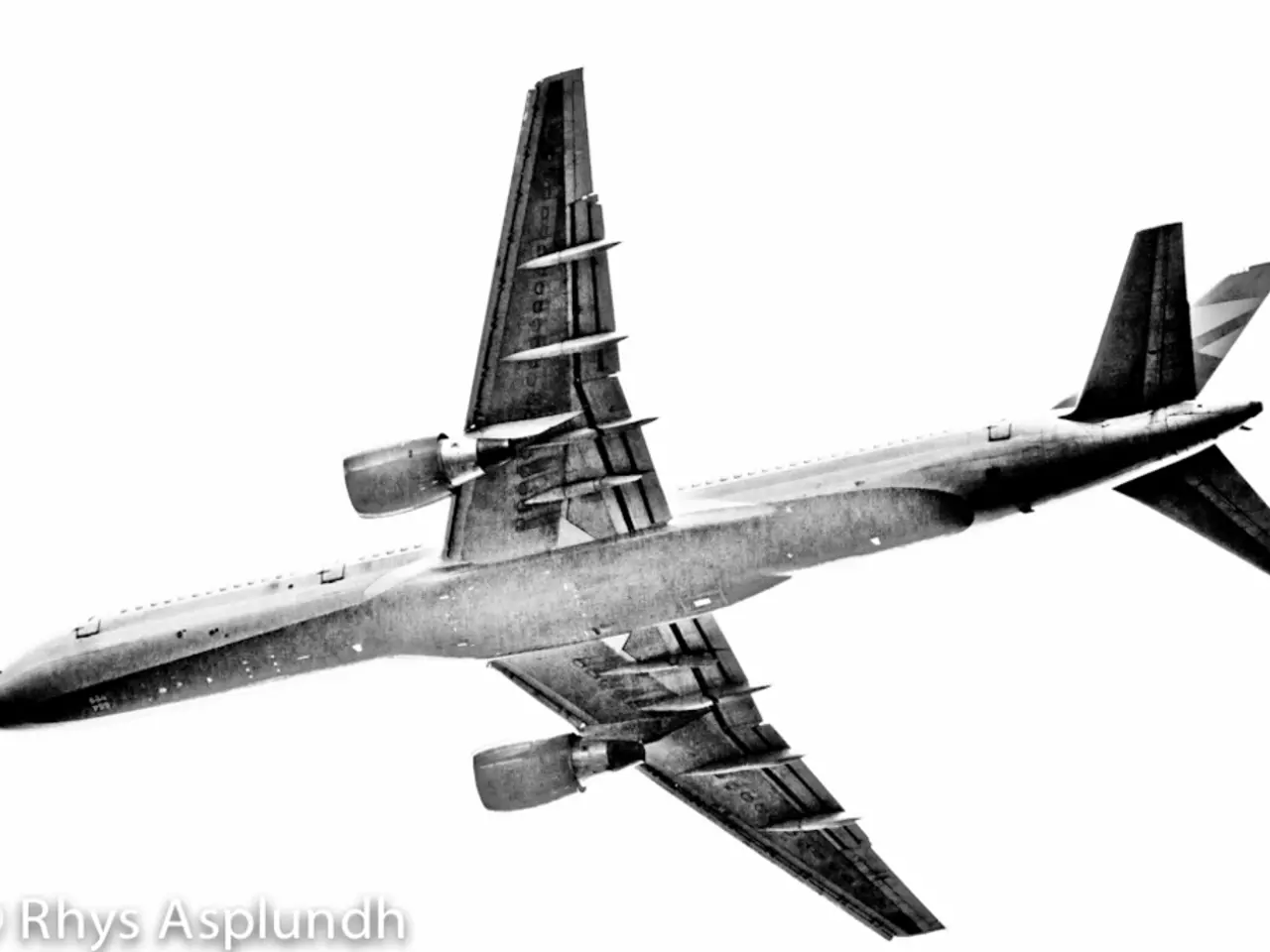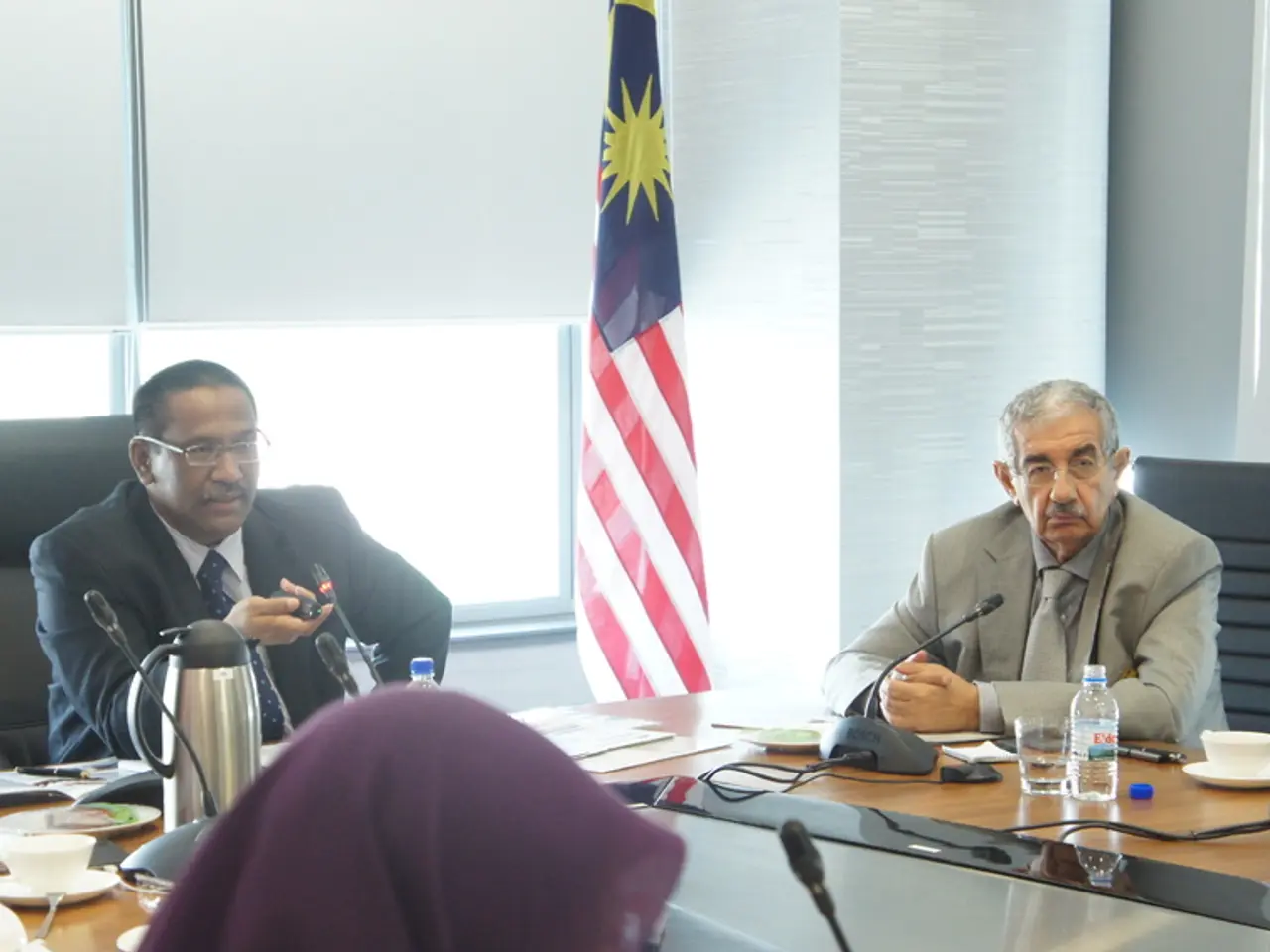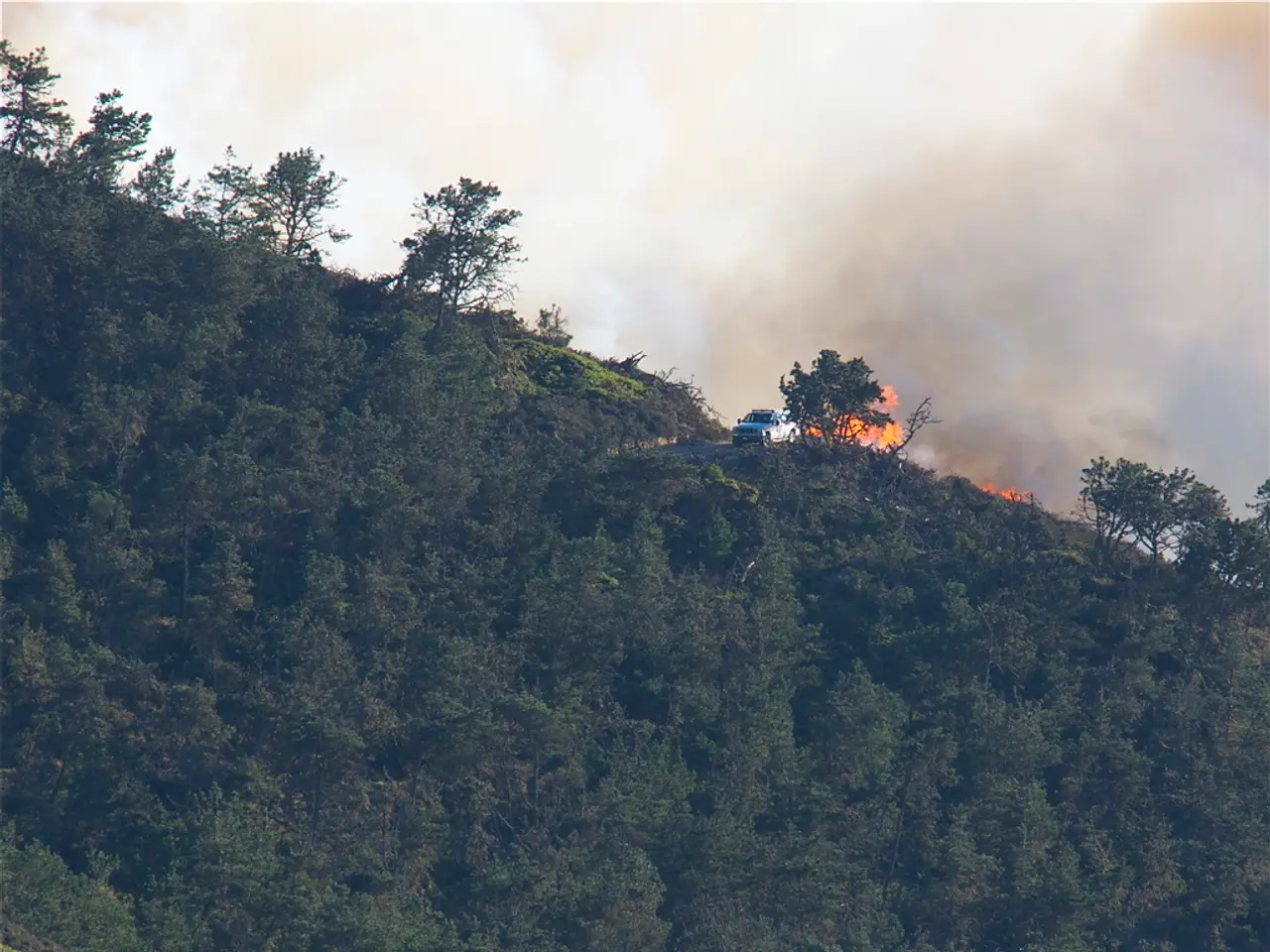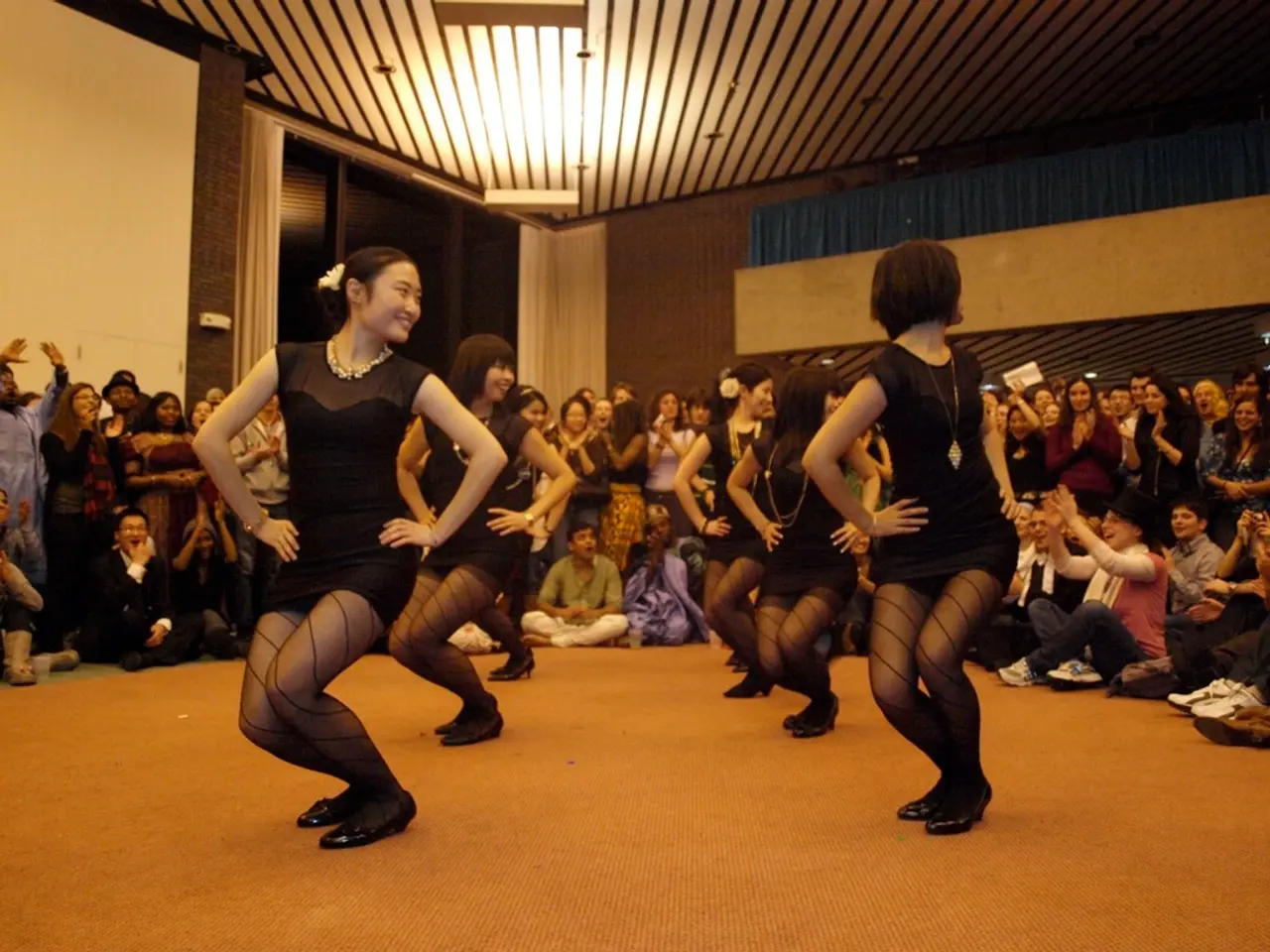Russian Airbase Under Ukrainian Attack - Russia's air base under fire: Ukrainian forces announce attack
In the ongoing conflict between Russia and Ukraine, the impact of drone attacks on Russian military aviation capabilities is becoming increasingly significant. Ukrainian forces have been employing long-range drones and covert operations to strike key Russian airbases, even those deep inside Russian territory.
One such example is the Borisoglebsk military airfield, although it has not been explicitly mentioned in the recent attacks reported. However, the pattern of Ukrainian drone attacks suggests that Borisoglebsk could be part of the network of Russian air bases at risk.
The Borisoglebsk airfield, while not directly targeted in the recent incidents, is strategically important due to the presence of enemy combat jets such as Su-34, Su-35S, and Su-30SM. The airfield's proximity to the Ukrainian border, approximately 500 kilometers as the crow flies to the city of Kharkiv, makes it a potential target for Ukrainian forces.
Recent attacks have focused on bases like Marinovka in Russia's Volgograd region, which has served as a fallback location for Russian fighter jets moved from more vulnerable forward bases. On July 1, 2025, Ukrainian drones reportedly destroyed at least two Su-34 fighter-bomber aircraft at Marinovka and caused fires in maintenance areas, demonstrating the vulnerability of even well-dispersed Russian aircraft to Ukrainian drone strikes.
These drone strikes are part of a broader Ukrainian strategy to degrade Russian aviation and air defense capabilities. Coordinated efforts by Ukraine's Security Service (SBU) and Special Operations Forces have resulted in drone strikes destroying helicopters and air defense systems in occupied Crimea, as well as multiple airfields within Russian territory.
The consequences of these drone strikes have been substantial:
- Degradation of Russian aviation assets, with Ukraine claiming hundreds of Russian planes and helicopters lost since the invasion began. - Russian aircraft are forced to disperse and relocate to less vulnerable bases, which nevertheless remain susceptible to drone attacks. - Damage to repair and maintenance facilities hampers Russia's ability to sustain air operations. - The psychological and operational toll on Russian forces, as Ukrainian drones penetrate deep behind Russian lines.
While the Borisoglebsk airfield has not been highlighted in the latest attacks specifically, it is reasonable to infer that it is part of the network of Russian air bases at risk given the pattern of Ukrainian drone capabilities and their strategic targeting of Russian air infrastructure.
In conclusion, Ukrainian drone attacks on Russian airbases, such as Marinovka, represent a significant escalation and are inflicting sustained damage on Russia’s air power. These attacks underscore the persistent vulnerability of Russian air assets deep within its territory and are part of Ukraine’s broader efforts to weaken Russian military capabilities amidst the ongoing conflict.
The community and employment policies should address the increasing use of long-range drones in war-and-conflicts, such as the ongoing conflict between Russia and Ukraine, to ensure the safety and security of airbases like Borisoglebsk, a strategically important airfield due to its proximity to the Ukrainian border and the presence of enemy combat jets. The employment policy must also consider the potential employment opportunities for individuals skilled in drone technology, considering their importance in politics and general news, as demonstrated by the recent drone strikes on Russian airbases.








